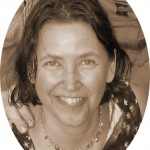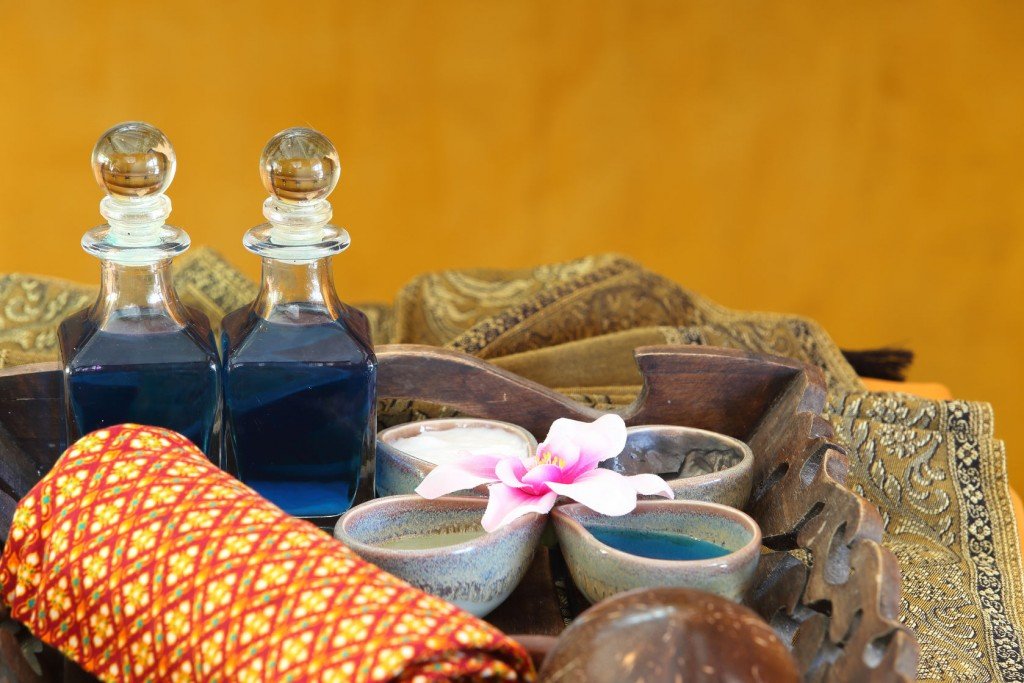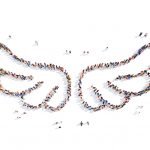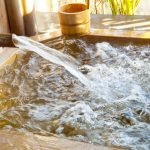According to Kneipp and Priessnitz
Sussanna Czeranko, ND, BBE
Not the cold but the body heat, produced by the reaction to cold water, is the healing factor.
-Vincent Priessnitz (Lust, 1900, p.2)
This [Priessnitz] bandage has been called a “universal remedy,” there is almost no disease, acute or chronic, in which this simple treatment cannot find application and it has become, so to say, the starting point of naturopathy.
-Benedict Lust, 1913, p.617
The linen used for the pack should be very coarse. The coarser it is, the more porous it will be, and the better can steam permeate it.
-I. Hartmann, 1905, p.372
One of the enduring strengths of naturopathic medicine is the cumulative power of our knowledge, arising from direct work with patients. Add to this energy the collaborative strength of customizing our exceptional repertoire of tools for optimal patient benefit, and there is no doubt that traditional protocols and modalities persist in relevance and value. It is not surprising, too, to discover how, say, a simple water procedure can manifest differently and similarly when used by two people, but whose value to us in the profession is enhanced by such intersections of practice and style. For example, many of us are familiar with the abdominal compress and perhaps use it in our practices for digestive complaints. Let’s take a closer look at this superb tool, noting the differing, yet similar pathways to water-cure taken by Priessnitz and Kneipp, showing up in many ways, such as two versions of the abdominal compress. These inquiries can perhaps expand our water-cure vocabulary.
One approach was advocated by Vincent Priessnitz (1799-1852) and the other by Father Sebastian Kneipp (1821-1897). “Vincent Priessnitz―who earned the title, ‘Father of Hydropathy’―was neither the discoverer of, nor the first to use, water as a remedial agent in disease.” (Metcalfe, 1901, p.218) Yet, much acclaim is attributed to Priessnitz as the one who “invented the sweating, not only in dry blankets, but also in wet-sheets” (Metcalfe, 1898, p.124) which had greatly influenced those who followed him in the practice of hydrotherapies.
Until Priessnitz, the practice of using cold water for healing seems on first blush to have taken shape in his work somewhat haphazardly and randomly. Priessnitz “was the son of a poor blind farmer and early when other children spent their time playing, young Vincent had to look after his father’s little farm.” (Lust, 1900, p.2) Once, while working in the fields, he watched a wounded deer, shot in the thigh, bathe in a nearby cold stream. “He saw how [the deer] managed to get its wounded thigh in such a position as to have it entirely covered with the flowing water… Great was his joy to observe the animal improve from day to day, till it finally got well.” (Metcalfe, 1898, p.12) With little formal education, his lessons came from his observations of nature. He used this learning to treat his own life-threatening injuries.
Indeed, Priessnitz is not dissimilar to many who have made significant advances in naturopathic medicine through personal discoveries of healing. At age 18, after being thrown by a horse and run over by a wagon loaded with oats, Priessnitz faced the fate of being an invalid as the very best prognosis. (Metcalfe, 1898, p.15) His broken ribs were beyond the help of the attending medical doctor and he was issued a prognosis of permanent disability. “The mere fact of telling this youth of eighteen that he would be an invalid all his life roused him in self-defence to try what wet bandages and water drinking would do in his case, and the results obtained fully justified the means employed.” (Metcalfe, 1898, p.17-18) Compounding his distress with such a limiting future, Priessnitz’ father had died young, leaving him solely responsible for the care of his siblings and mother. If a little cold water was good, he rationalized that more would be better and devised wet bandages that could remain in place applied to his injuries. Metcalfe reports, “He had cold bandages fixed across the chest; the acute pains diminished, and … he continued these compresses of linen towels, steeped in cold water, well wrung out, changing the bandages at intervals, and drinking a good deal of cold water… After several days, he was so far recovered as to be able to superintend his work at the farm.” (Metcalfe, 1898, p.16)
His fame as a healer spread far and wide and soon his attention turned from farming to healing. “People suffering from serious and distressing diseases came from all parts of the world to this modern Delphi, to regain, if not always health, at least alleviation from their sufferings, under the directions and salutary influence of [Priessnitz].” (Metcalfe, 1898, p.36) Vying for the secrets behind the clinical miracles, medical doctors descended upon Priessnitz’ village of Graefenberg. “But these learned pupils of Priessnitz did not have much success with their patients, for they applied water in the same way they applied drugs; they bothered too much with the art of it and paid too little attention to the nature of the water cure and the patient.” (Lust, 1900, p.2)
Another hydrotherapy giant, “Sebastian Kneipp, born in an obscure hamlet in Bavaria in 1821, found himself at the age of 26, when he should have been at the very zenith of young and vigorous manhood, in feeble health, weak of lungs, threatened with consumption, and with every prospect of filling an early grave.” (Lust, 1902, p.233) Unlike Priessnitz, who studied Nature, herself, to heal himself, Kneipp cured himself by following the guidance contained in J. S. Hahn’s small volume, “On the Power and Effect of Cold Water (1758) … and whose father, Dr S. Hahn, was a worshipper of cold water.” (Metcalfe, 1901, p.219) “It was Hahn who jotted down the teachings of his father in a little note book … [and] which by chance fell in the hands of Kneipp [and to whom] we owe the present developed cold water cure.” (Baumgarten, 1902, p.515) This small book came as the “lifeboat which was sent to [him] by a merciful Providence in the nick of time, in the hour of extreme peril.” (Lust, 1901, p.211) Hahn, no doubt, was instrumental in influencing and perhaps even shaping hydrotherapy; however, it is the implementation and work of both Priessnitz and Kneipp that laid a foundation for hydrotherapy. Colonel Ripper, Priessnitz’ son-in-law, sets the record straight: “Priessnitz, like [Kneipp] cured himself when given up by the doctors, with the only difference that he had no book on the water-cure to help him.” (Metcalfe, 1898, p.119)
There are more similarities in the work of Kneipp and Priessnitz than differences. Both advocated fresh air, a simply healthy diet and various applications of water. In their various uses of water, both were renowned for their diagnostic accuracy and application. “The precision with which Priessnitz diagnosed surprised many patients.” (Metcalfe, 1898, p.78) Metcalfe remarks, “I was amazed at Priessnitz’s extraordinary ability in diagnosing human ailments, and at his power of adapting the treatment to suit each chronic case that came to him.” (Metcalfe, 1898, p.83) Metcalfe continues, “The observations which Priessnitz made at the first bath enabled him to decide whether the patient was fit or unfit for the water-cure.” (Metcalfe, 1898, p.84) Astute observation was the key to both men as they assessed and diagnosed their cases. “Father Kneipp never examined a patient by auscultation or percussion, and yet achieved such remarkable results in the cure of diseases.” (Lust, 1900, p.148) Neither used any diagnostic equipment to arrive at their diagnosis but used their gift of observation that evolved from observing thousands of patients who streamed to their healing centers. “Kneipp having an experience of 30 to 40 years, with eyes fabulously trained to read the diseases at sight, thus doing away with all examination; a man thus trained will see at once what others cannot detect after hours of physical examination.” (Baumgarten, 1903, p.185)
Both Priessnitz and Kneipp had a commanding and confident presence that assured their patients of their treatments. In the case of Priessnitz, he “exercised a powerful influence on his patients, both by his look and by the touch of his hand. One of his earnest looks was sufficient to make a spoiled and enervated patient do things without a murmur.” (Metcalfe, 1898, p.96) Kneipp equally “possessed a large share of personal magnetism that created confidence and love and made people willing to obey him promptly and unquestioningly.” (Lust, 1904, p.145)
The stature and composure of both men projected strength and simplicity. Metcalfe describes “Priessnitz’s personal appearance as that of a man of simple, and yet strong and powerful character. His whole demeanour bore the stamp of energy; the expression of his face showed the thinker and the keen observer.” (Metcalfe, 1898, p.39) Lust shares his perceptions of Kneipp: “Physically, he presented a majestic appearance that awed one when in his presence.” (Lust, 1909, p.506)
The simplicity of the lives of both Priessnitz and Kneipp persisted throughout their lives. Their patients came absolutely first. “Kneipp could have accrued millions had he chosen to accept payment for the treatment of his patients. The poor were always treated free, and whatever he accepted of the rich, he donated again to the poor or endowed to charitable institutions.” (Lust, 1909, p.507) Priessnitz, for his part, had attracted many awards and tokens of appreciation. “Far from being intoxicated by his great success and unexpected fortune, Priessnitz remained true to his simple habits, and never altered his mode of life.” (Metcalfe, 1898, p.35)
Both men experienced much grief from local medical men who brought legal confrontations and criticism against their accomplishments. Yet, when their success was undeniable, medical men eventually relented, and began to pay closer attention to what constituted their success. Priessnitz exclaimed, “It is always professors of medicine who are my worst pupils.” (Metcalfe, 1898, p.98) Priessnitz continues, “If they wish to become good water-doctors, they must begin by forgetting a great deal of their previous experience in the treatment of diseases by medicine. Doctors have neither knowledge of, nor faith in, the healing virtue of cold water.” (Metcalfe, 1898, p.46)
The terms used in hydrotherapy can catch us off guard. Sometimes, a compress is called a wrap, a pack, a packing, a bandage, or a mantle. As explored below, all are essentially applied in a similar manner. Priessnitz often referred to the compress as a bandage and considered it to be “a ‘universal remedy’ [such that] there is almost no disease, acute or chronic, in which this simple treatment cannot find application and [which] has become, so to say, the starting point of naturopathy.” (Lust, 1913, p.617) The early water healers did not have dozens of water-cure applications in their repertoire, but often used 1 or 2 or a small few, but used them with a full comprehension of their mechanism and precision, resulting in powerful medical outcomes.
In any case, as Hartmann explains, the compress gained its reputation on its ability to “open the pores; and by this process all morbid matter will be expelled from the system.” (Hartmann, 1905, p.372) Priessnitz determined the objective of water-cure was as follows:
- the re-establishment of obstructed and suppressed secretions;
- the elimination of diseased matters through the bowels, kidneys, or skin; and
- the formation of a critical action of some sort on the skin
(Metcalfe, 1898, p.104)
The critical action, or healing reaction or crisis, was viewed as a signal that the internal organs were able to establish homeostasis. (Metcalfe, 1898, p.104)
The Priessnitz Abdominal Bandage
The rules of applying a compress were quite similar for both the Kneipp and Priessnitz compress. “The physiological effects of the Priessnitz bandage are like those of any wet sheet packing.” (Lust, 1913, p.617) Both Kneipp and Priessnitz emphasized the water application be cold when applied. While Kneipp advocated short exposures to cold, and frowned upon any excess of cold, Priessnitz had a reputation for administering cold water applications for long periods of time. Cold bandages were wrapped around the body and “when dry, it is re-wetted, and is in many cases worn night and day.” (Metcalfe, 1898, p.95)
Worth noting is that in 1905, Lust wrote an article in The Naturopath and Herald of Health that was opposed to some of the Priessnitz methodology as practiced by some of “the representatives of the old Priessnitz method. Lust cautions,
In using water applications, the following points should not be neglected: first that the exposing of the warm body to the cold application should be of short duration (which Priessnitz and his followers still do not sufficiently consider), and in the second place that neither the cold water application nor an exposing of the body to such should be made when the patient is shivering. (Lust, 1905, p.70)
By 1913, Lust had a change of heart and wrote another article extolling the virtues of the Priessnitz abdominal bandage. By this time, Lust had incorporated the element of warmth in a patient prior to administering an abdominal Priessnitz bandage. Lust states…
It must be borne in mind that the Priessnitz bandage cannot be applied when the patient is feeling chilly; if this is the case, the patient must first be warmed entirely, which can be done by a steam bath, or a hot tub bath, or a hot foot bath, or by resting in bed with hot water bottles applied to the feet and calves, or, if the patient is able, by a brisk walk or exercises; also through a vigorous rubbing of the whole body with warm cloths or with alcohol, warm oil, etc. (Lust, 1913, p.617)
The abdominal bandage had served Priessnitz very well in his youth and it was this treatment that he “prescribed to all who suffered from complaints in the abdominal regions. In fact, nearly all his patients had to wear this bandage to facilitate digestion, and aid the action of the bowels and to draw to the surface rashes – in other words, a crisis.” (Metcalfe, 1898, p.94)
Lust gives explicit instruction in the abdominal bandage which…
consists of two parts, a wet one and a dry one, or an internal one and an external one. The internal bandage should be about 7 or 8 inches wide and long enough to reach around the whole abdomen, double on the front, and that means the two ends form a double cover on the stomach part and single on the back. The dry or external part must be about 10-12 inches wide in order to cover the wet or internal one thoroughly. The best material for the internal bandage is raw silk; if not within reach, linen crash or any old linen table cloth, bed sheet or towel may be used. For the cover thick flannel or a piece of a woolen blanket is practicable. The internal bandage must be dipped in cold water and wrung thoroughly to avoid wetting of the cover bandage, which would retard the reaction. (Lust, 1913, p.617)
The bandage was wrapped tightly around the waist, but not so tightly that “the patient may feel uncomfortable.” (Lust, 1913, p.617) Caution was raised by Lust that the abdominal bandage not be too loose either, for then “steam escapes and the body feels chilly and a reaction cannot take place.” (Lust, 1913, p.617)
Should the patient become restless during the water application, then the bandage was removed. However, if the patient fell asleep, “the sleep must not be interrupted no matter how long it lasts; but after awakening the bandage is to be taken off and a short cool sponge bath round the abdomen is to be given.” (Lust, 1913, p.617)
Rubbing
One of the signature procedures of Priessnitz was his use of friction and rubbing. “Priessnitz resorted extensively to rubbing with the flat hand. He recognized the beneficial effects of manipulative friction as a curative agent.” (Metcalfe, 1898, p.96) At the conclusion of each abdominal bandage treatment, the abdomen would be rubbed until dry. Metcalfe goes on, “Priessnitz resorted extensively to rubbing with the flat hand. Having been scrutinized by jealous and suspicious medical men, Priessnitz was accused of using a chemical in his sponges when applying friction to his patients. To dismiss any accusations, he “only used the flat hand to rub his patients, and was even more successful than before as now … ‘flesh upon flesh,’ as he quaintly expressed himself.” (Metcalfe, 1898, p.122) These friction rubs could last for some time and in order to not aggravate the patient’s skin from the “protracted rubbing, Priessnitz had a linen sheet, wrung out more or less dry, wrapped round the patient, either in a sitting or reclining position.” (Metcalfe, 1898, p.122)
Kneipp Abdominal Compress
According to Bilz, who followed Kneipp’s methodology in all water applications, the abdominal compress was called upon “in cramp-like attacks, in constipation, various diseases of women, affections of the stomach and more particularly in cases in which it is desired to draw the blood from the heart and chest.” (Bilz, 1898, p.1682) The abdominal compress was an excellent means of hardening the body and removing “great obstructions or inactivity of the bowels.” (Kneipp, 1909, p.631)
Kneipp would apply the compress according to the vitality of the patient. “A rough towel folded several times is dipped into cold or warm water according to the purpose it is to serve, laid on the abdomen and covered with flannel.” (Bilz, 1898, p.1682) Kneipp explains that the number of layers of cloth used in a compress was the following: “For a weak person a two-fold, for a strong person four-fold, and for a person who is robust six-fold, or even eight-fold.” The compress would be dipped in cold water and wrung out and cover “the pit of the stomach to the middle of the thigh … where it should remain for an hour and a half and then be removed. The effect would be greater if, at the end of ¾ of an hour, it were again dipped in water and laid on afresh.” (Kneipp, 1909, p.631)
Water and More
The Kneipp abdominal compress employed not just water to moisten, but other decoctions and fluids were also used. Vinegar mixed in equal parts with water was used for weak [persons] in detoxing the body of morbid matter. Salt water worked as effectively as vinegar that “open[ed] the pores and produce[ed] warmth very quickly.” (Hartmann, 1905, p.373)
Kneipp was not averse to the use of warm compresses for the abdomen. In the case of weak constitutions, Kneipp prescribed warm compresses “dipped in decoctions of hay-flower, oat-straw, and pine shoots,” explaining that “these decoctions contain material which can be taken in through the skin, confirming the principle that where a discharge takes place then absorption also is possible.” (Kneipp, 1909, p.631)
Women
Hardening was the standard objective to treat women suffering from menstrual cramps and those feeling debilitated. The hardening protocol included “three cold hip baths a week, of one or two minutes duration, and daily ablution, … wearing less thick clothing and walking bare-footed [were] the best preventative measures.” (Lust, 1900, p.149) Women were instructed to use the abdominal compress. “At night a four-fold cloth dipped in vinegar and water, should be kept on the abdomen for two hours.” (Lust, 1900, p.149)
At one point I personally used the Kneipp abdominal compress without knowing that that was what I was doing. Often for patients suffering from constipation or digestive complaints, I would instruct the Kneipp abdominal compress as homework, with outstanding success. However, just recently, I have had an occasion to try the Priessnitz abdominal bandage and be astounded by its efficacy in treating a wicked flu. Never underestimate the 7-inch small Priessnitz bandage as being anything short of miraculous. I was not prepared for the initial, sharp, stinging cold of this very small bandage. Having had many wet sheet wraps and short bandages [extending from axilla to mid calf], I can report that the Priessnitz abdominal bandage is minute by comparison, but indispensably powerful when treating a flu that does not respond to any other treatment. Discovering the Priessnitz abdominal bandage has expanded my understanding of how small water applications can have dramatic clinical outcomes. My recent personal experience has once again reinforced my respect of the wisdom of the early Naturopaths. Small can often deliver more.

Sussanna Czeranko, ND, BBE is a CCNM graduate and is a licensed ND in Ontario and Oregon. Practicing since 1994, she has developed an extensive armamentarium of nature-cure tools and techniques for her patients, with special interest in balneotherapy and breathing therapy. In addition to clinical practice, she is the curator of the Rare Books Collection at NCNM. Her current project is a 12-book series entitled In Their Own Words, the first volume of which, Origins of Naturopathic Medicine, is now available from NCNM Press. The series restores to the profession the best of the early Lust journal literature. Sussanna founded The Breathing Academy, providing a scientific model of breathing therapy called Buteyko for naturopathic practice. Her next large project is to complete the development of a medical spa in Manitou Beach, Saskatchewan.
References
Baumgarten, A. (1902). About the use of cold water. The Naturopath and Herald of Health, III(12), 514-517.
Baumgarten, A. (1903). On the different effects of cold water. The Naturopath and Herald of Health, IV(7), 184-185.
Bilz, F. E. (1898). Bilz, The Natural Method of Healing. New York, NY: The International News Company.
Hartmann, I. (1905). The cold water treatment in general. The Naturopath and Herald of Health, VI(12), 372-378.
Kneipp, S. (1909). Bandages and compresses. The Naturopath and Herald of Health, XIV(10), 624-632.
Lust, B. (1900). A brief history of natural healing. The Kneipp Water Cure Monthly, I(1), 2-5.
Lust, B. (1900). Diseases, how to treat them according to the Kneipp system. The Kneipp Water Cure Monthly, I(9), 149-151.
Lust, B. (1901). The Kneipp cure. The Kneipp Water Cure Monthly, II(8), 210-212.
Lust, B. (1902). The Kneipp cure. The Naturopath and Herald of Health, III(5), 233-235.
Lust, B. (1904). Father Kneipp and his methods. The Naturopath and Herald of Health, V(7), 145-149.
Lust, B. (1905). Does hydrotherapy require reform? The Naturopath and Herald of Health, VI(3), 70-71.
Lust, B. (1909). The 88th birthday anniversary of Rev. Father Kneipp. The Naturopath and Herald of Health, XIV(8), 506-508.
Lust, B. (1913). The Priessnitz or abdominal bandage. The Naturopath and Herald of Health, XVIII(9), 617-618.
Metcalfe, R. (1898). Life of Vincent Priessnitz, founder of hydropathy. Metcalfe’s London Hydro. Ltd, Richmond Hill, Surrey.
Metcalfe, R. (1901). Vincent Priessnitz. The Kneipp Water Cure Monthly, II(8), 218-220.





